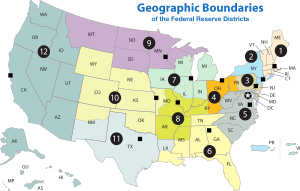Companies around the world are cutting back their financial-
incentive programs, but few have used other ways of inspiring talent. We think they should. Numerous studies have concluded that for people with satisfactory salaries, some non-financial motivators are more effective than extra cash in building long-term
employee engagement in most sectors, job functions, and business contexts. Many financial rewards mainly generate short-term boosts of energy, which can have damaging
unintended consequences. Indeed, the economic crisis, ... gives business leaders a great opportunity to reassess the combination of financial and nonfinancial incentives that will serve their companies best through and beyond the downturn.
A recent
McKinsey Quarterly survey underscores the opportunity. The respondents view three noncash motivators—praise from immediate managers, leadership attention (for example, one-on-one conversations), and a chance to lead projects or task forces—as no less or even more effective motivators than the three highest-rated financial incentives: cash bonuses, increased base pay, and stock or
stock options (exhibit). The survey’s top three nonfinancial motivators play critical roles in making employees feel that their companies value them, take their well-being seriously, and strive to create opportunities for career growth. These themes recur constantly in most studies on ways to motivate and engage employees.
Exhibit
Three nonfinancial incentives are even more effective motivators than the three highest-rated financial incentives.
... Money’s traditional role as the dominant motivator is under pressure from declining corporate revenues, sagging stock markets, and increasing scrutiny by regulators, activist shareholders, and the general public. Our in-depth interviews with HR directors suggest that many companies have cut remuneration costs by 15 percent or more.
What’s more, employee motivation is sagging throughout the world—morale has fallen at almost half of all companies, according to another McKinsey survey —at a time when businesses need engaged leaders and other employees willing to go above and beyond expectations. Organizations face the challenge of retaining talented people amid morale-sapping layoffs that tend to increase voluntary turnover over the medium term. ...
... Two-thirds of the executives we surveyed cited cost reductions as one of the top three reasons for the changes; 27 percent made changes to increase employee motivation; and only 9 percent had the goal of attracting new talent. ...
Even though overall reliance on financial incentives fell over the past 12 months, a number of companies curtailed their use of non-financial ones as well. Thirteen percent of the survey respondents report that managers praise their subordinates less often, 20 percent that opportunities to lead projects or task forces are scarcer, and 26 percent that leadership attention to motivate talent is less forthcoming.
Why haven’t many organizations made more use of cost-effective non-financial motivators at a time when cash is hard to find? ... “Managers see motivation in terms of the size of the compensation,” explained an HR director from the financial-services industry.
Another reason is probably that non-financial ways to motivate people do, on the whole, require more time and commitment from senior managers. One HR director we interviewed spoke of their tendency to “hide” in their offices... This lack of interaction between managers and their people creates a highly damaging void that saps employee engagement.
Some far-thinking companies, though, are working hard to understand what motivates employees and to act on their findings. One global pharmaceutical company conducted a survey that showed that in some countries employees emphasized the role of senior leadership; in others, social responsibility. ... One biotech company has re-framed the incentives issue by putting the focus on “recognition” instead of “reward” in order to inspire a more thoughtful discussion about what motivates people.
The top three non-financial motivators our survey respondents cited offer guidance on where management might focus. The HR directors we spoke with, for example, emphasized leadership attention as a way to signal the importance of retaining top talent. ...
“One-on-one meetings between staff and leaders are hugely motivational,” explained an HR director from a mining and basic-materials company—“they make people feel valued during these difficult times.” By contrast, our survey’s respondents rated large-scale communications events, such as the town hall meetings common during the economic crisis, as one of the least effective non-financial motivators, along with unpaid or partially paid leave, training programs, and flexible work arrangements. ...
A chance to lead projects is a motivator that only half of the companies in our survey use frequently, although this is a particularly powerful way of inspiring employees to make a strong contribution at a challenging time. Such opportunities also develop their leadership capabilities, with long-term benefits for the organization. One HR director in the basic-materials industry explained that involvement in special projects “makes people feel like they’re part of the answer—and part of the company’s future.” ...
With profitability returning to some geographies and sectors, we see signs that bonuses will be making a comeback: for instance, 28 percent of our survey respondents say that their companies plan to reintroduce financial incentives in the coming year. While such rewards certainly have an important role to play, business leaders would do well to consider the lessons of the crisis and think broadly about the best ways to engage and inspire employees. A talent strategy that emphasizes the frequent use of the right non-financial motivators would benefit most companies in bleak times and fair. By acting now, they could exit the downturn stronger than they entered it.
About the authors
Martin Dewhurst is a director in McKinsey’s London office, where Matthew Guthridge is an associate principal and Elizabeth Mohr is a consultant.













































inShare